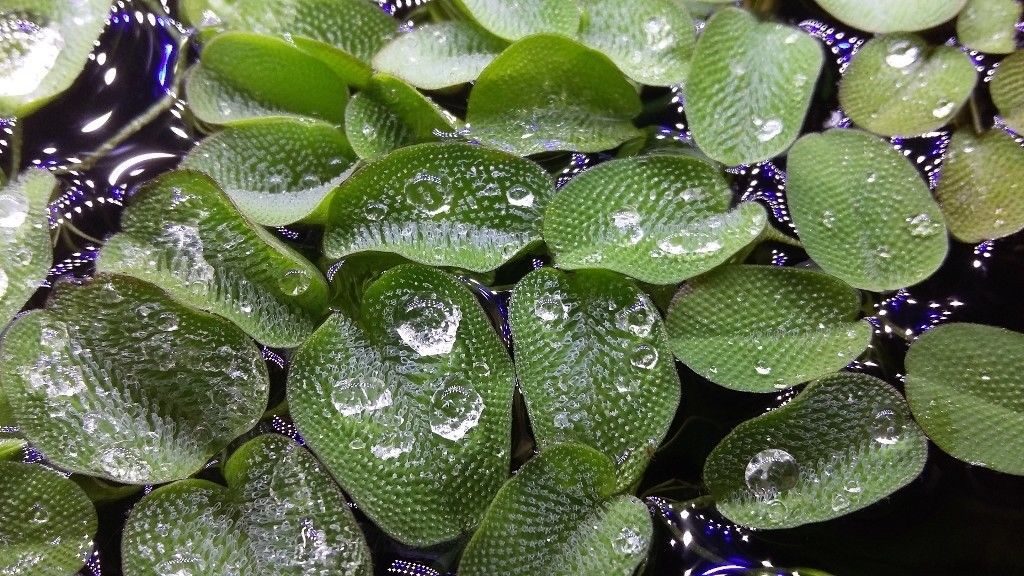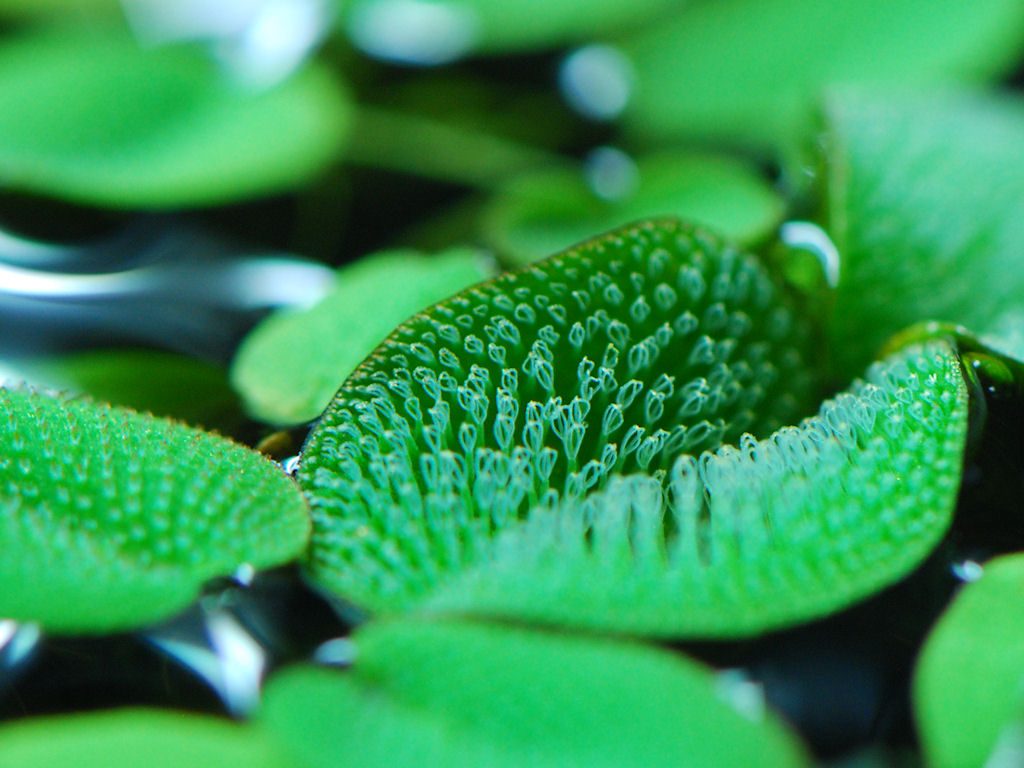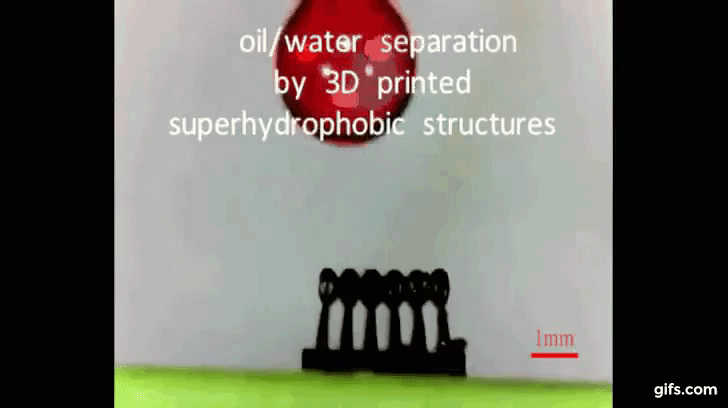Using 3D printing, scientists at the University of Southern California are able to replicate the microscopic structure of plants found in tropical areas of America, Eurasia and Africa.
With hydrophobic leaves, the Salvinia genus, commonly known as Watermoss, has the capability of micro manipulating droplets of water.

Secret egg-beaters
The secret to Salvinia’s remarkable magic trick is in the shape of the hairs neatly packed on the surface of its leaves. Resembling microscopic egg-beaters, the hairs effectively “clutch” droplets of water.
USC postdoctoral researcher Yang Yang explains, “I think the reason the plant’s surface is super-hydrophobic is because it lives on the water and requires air to survive,”
“If it weren’t for the long-term evolution of this plant, the plant could be submerged in water and would die.”

Separating oil and water
By combining 3D printed plastic and carbon nanotubes, USC researchers were able to create “egg-beater” samples that could hold water when turned on their side and upside down. Xiangjia Li, a PhD student an co-author of the study comments, “You can have a robotic arm with a gripper made to mimic ‘Salvinia effect,'”
“No matter which way you move the arm, the gripping force is so large that a droplet will stay attached.”
The team also gave the structure oil absorbing properties. “We tried to create one functional surface texture that would be able to separate oil from water,” adds USC Associate Professor and lab-lead Yong Chen.
“Basically, we modified the surface of the materials by using a 3D printing approach that helped us achieve some interesting surface properties.”
The samples were made using a technique called immersed surface accumulation 3D printing (ISA-3D Printing) specially developed in the USC lab.

Immersed surface accumulation 3D printing
ISA-3D printing is a type of vat polymerization. Unlike commercially available methods of this kind (e.g. SLA, DLP, CDLP and CLIP) ISA-3D printing is also designed to delicately pattern an object after printing. This is what enables the USC team to create such fine features of the “egg beaters” and instil them with inspiring properties.
So far, ISA-3D printing has been used to make a prototype that the teams hopes to scale and use for oil separation in vast quantities of water. On a microscopic level, the material has a number of breakthrough lab applications in medicine, chemical synthesis, and pharmaceutical trials.
The future is natural
3D printing and biomimetic design combined creates some fascinating possibilities in the world of materials.
Previously, researchers at MIT succeeded in replicating the innate toughness of a conch shell. Owl wings are inspiring next generation aircraft design. And studying the structure of butterfly wings may yield the secret to true, full-color 3D printing.
A paper, “3D‐Printed Biomimetic Super‐Hydrophobic Structure for Microdroplet Manipulation and Oil/Water Separation“, detailing further specifics of the USU oil and water Salvinia study is published online in Advanced Materials journal. It is co-authored by Yang Yang, Xiangjia Li, Xuan Zheng, Zeyu Chen, Qifa Zhou and Yong Chen.
For more related research and news subscribe to the 3D Printing Industry newsletter, follow us on Twitter, and like us on Facebook.
Looking to get involved in a new project? Join 3D printing jobs for the latest vacancies in software, hardware and materials.
Vote now in the 2018 3D Printing Industry Awards for research/academic of the year and more. Want to design the trophy? Enter the 2018 3D Printing Industry Awards design competition. sponsored by Protolabs now.
Featured image shows a Salvinia leaf mimicking sample made by ISA-3D printingas USC. Photo via University of Southern California



